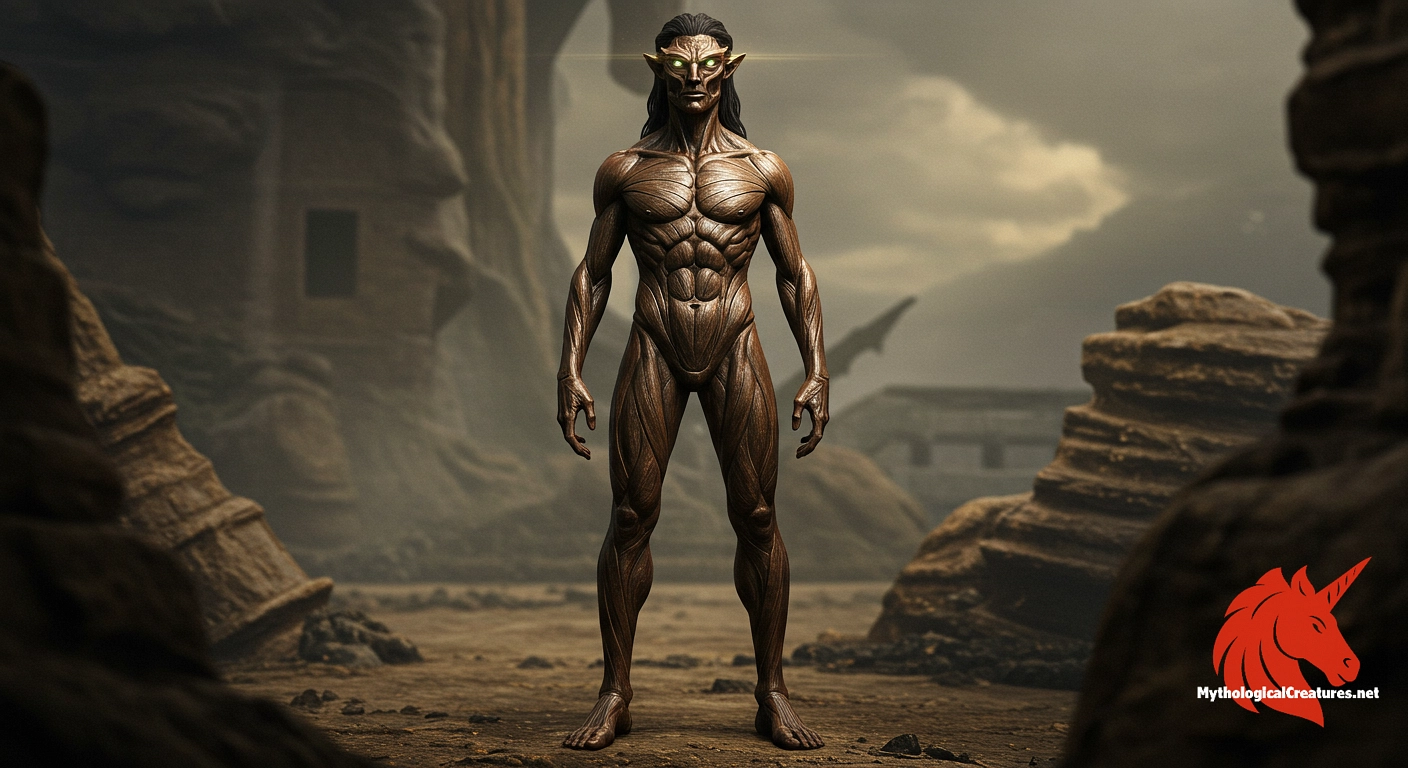Milcom: Milcom, also known as Milkom, is the national god of the Ammonites attested in the Hebrew Bible and archaeological records.

Milcom
Milcom - Milcom played a central role in shaping the religious and cultural identity of the Ammonites and is noted for his debated association with other deities such as El and Moloch.
Origins & First Encounters
Milcom emerges as a central figure in the religious framework of the ancient Ammonites, recognised as either their national god or a beloved popular deity. His earliest attestations appear in the Hebrew Bible and through a wide range of archaeological evidence unearthed from the Ammonite heartland. His origins are embedded in a complex matrix of cultural interactions and political identities that shaped the ancient Near East. The deity’s veneration reflects a society that valued both martial prowess and communal prosperity, with his cult symbolising the resilience and distinctiveness of Ammonite civilisation. Milcom’s influence appears not only in religious iconography and inscriptions but also in the social and political narratives that defined the region. He was celebrated in rituals that reinforced local traditions and underscored the unity of his people. Over time, his myth evolved as local practises and external influences intermingled, enriching his persona. His continuing legacy is a testament to the enduring impact of ancient religious thought and the rich tapestry of cultural heritage he represents.
Source Texts & Tale Variants
Textual records and archaeological documents provide a multifaceted portrait of Milcom, drawing from both the Hebrew Bible and intricate Ammonite inscriptions. The biblical accounts reference him indirectly, lending him a complex aura that invites debate among scholars regarding his precise nature and authority. Inscriptions found on votive objects and temple remains offer alternative narratives that reveal his dual capacity as both a warlike and protective deity. Numerous stories preserved through local tradition accentuate his role in rituals, highlighting the significance of his cult in everyday religious practices. Variations in his worship are evident from different textual fragments, suggesting a dynamic interplay between myth and reality. Some accounts characterise him as a benevolent patron who assured communal well-being, while others emphasise his formidable aspect in times of conflict. In these ancient texts and artefacts, one finds a mosaic of traditions that contribute to a richer understanding of Ammonite spirituality. The ongoing discovery of archaeological evidence continues to shed light on how his cult was celebrated and adapted over centuries.
Form & Powers
While direct physical depictions of Milcom are sparse, the surviving iconography provides intriguing hints at his perceived form and attributes. Artistic renderings on ancient amulets and temple reliefs suggest that he may have been imagined as a robust and regal figure, embodying strength and authority. Some reliefs hint at iconographic elements such as elaborately styled beards or crown-like headgear which signify his divine status. The inscriptions and decorative motifs often incorporate abstract symbols, possibly representing horns or other elements that denote power and fertility. These visual elements were likely intended to evoke an aura of martial vigour and protective force within the community. Variations in the artistic style of his depictions reflect the regional influences and the evolving aesthetic conventions of the ancient Near East. Although definitive descriptions remain elusive, the recurrent themes of regality and resilience dominate his artistic portrayals. The amalgamation of human and symbolic features in these artefacts emphasises a layered interpretation of his divine personality.
Regional Faces
Within the heartland of Ammon, Milcom was revered in ways that were deeply intertwined with local geographic and cultural identities. The deity’s worship was tailored to address the unique environmental conditions and societal needs of the region, accentuating regional pride and devotion. In certain locales, his attributes were adapted to symbolise the stark contrasts of the arid landscapes and rugged terrain, merging natural phenomena with divine power. Bordering cultures often absorbed aspects of his symbolism, resulting in variant forms that coalesced with broader Canaanite theological ideas. These regional adaptations allowed neighboring communities to reinterpret his iconography and ritual significance in ways that resonated with their own traditions. The fluidity of his representation across different sites underscores the adaptability of ancient myth-making processes. Local rituals, temple practices, and even everyday devotional objects were all imbued with an essence of Milcom’s influence, tailored to specific cultural narratives. This regional variation mirrors the broader dynamics of cultural diffusion and syncretism in the ancient Near East.
Cultural Parallels
Milcom’s character invites comparative reflection with several other deities of the ancient Near East, where overlapping functions and iconographic themes are a recurring motif. His attributes often draw parallels with Moloch, a deity whose ominous rites and nomenclature have sparked significant scholarly debate. Similarities with the Canaanite supreme deity El emerge, especially in terms of authority, wisdom, and paternal protection, even though nuanced differences set them apart. The amalgamation of divine traits from neighbouring pantheons illustrates the common tendency toward syncretism in the ancient world. Comparisons with other national gods reveal recurring themes of martial vigour and fertility, positioning Milcom within a broader spectrum of protective and providential deities. Cross-cultural analysis suggests that while each deity maintained distinct local identities, the exchange of ideas enriched their mythological and religious roles. Scholarly examination often places Milcom alongside other ancient figures, emphasising both shared traditions and the unique cultural imprint of the Ammonite people. This comparative perspective helps to illuminate the interplay between local identity and broader ancient Near Eastern religious practices.
Legacy & Modern Evolution
Over the centuries, Milcom’s depiction has evolved from a robust local deity into a symbol of ancient cultural identity, reflecting the shifting landscapes of faith and power. His transformation mirrors the broader decline of polytheistic worship in the face of emerging monotheistic traditions, yet his myth continues to resonate with modern scholars and enthusiasts alike. Contemporary interpretations draw on both archaeological discoveries and a reexamination of ancient texts, highlighting his role as a conduit to understanding early societal values. Modern scholarship has revitalised interest in his attributes, prompting a reassessment of his significance in the pantheon of ancient Near Eastern deities. Artistic representations, literary allusions, and academic discussions have all contributed to a renewed appreciation of his enigmatic character. His evolving legacy serves as a reminder of the fluid boundaries between myth, history, and cultural memory. Today, Milcom is often invoked in discussions that explore the interplay between ancient belief systems and modern cultural identity. His enduring symbolic presence offers a window into the resilience and adaptability of ancient religious thought in modern times.
Interesting Fact
A notable aspect of Milcom’s myth is the ongoing scholarly debate regarding his precise associations, particularly with deities such as El and Moloch, which reflects the fluid and syncretic nature of ancient Near Eastern religious traditions.
Quick Creature Info
Origin:
Our Mythic Legendary Rating:

Also Sometimes Known As:
Habitat:
Supernatural Powers:
Physical Attributes:
Abilities:
Behavior:
Lore:
Related Creatures, Tales or Lore
- EEl
- MMoloch
- CChemosh
References
Discover Another Mythical Legend You May Not Have Heard Of?
Uncover the mysteries of ancient folklore and expand your knowledge of legendary beings from cultures around the world.
Dare to Meet the Merrow....
Mythical Disclaimer: The images and data on this site are derived from various historical and literary sources, but we have found that many myths often have multiple versions and interpretations across references, sometimes contradictory. As a result, these creature depictions are artistic interpretations—imaginative blends of folklore, legend, and a dash of AI guesswork. Because creature descriptions vary widely, our illustrations and accompanying information represent our best effort to honor mythology while bridging creative gaps. Enjoy these interpretations—just remember, we've done our best to respect the stories and validate available data, but in the realm of mythology, details often shift, imagination leads the way, and nothing is ever set in stone!
Curated by the Mythological Creatures Team (rev. May 2025)
